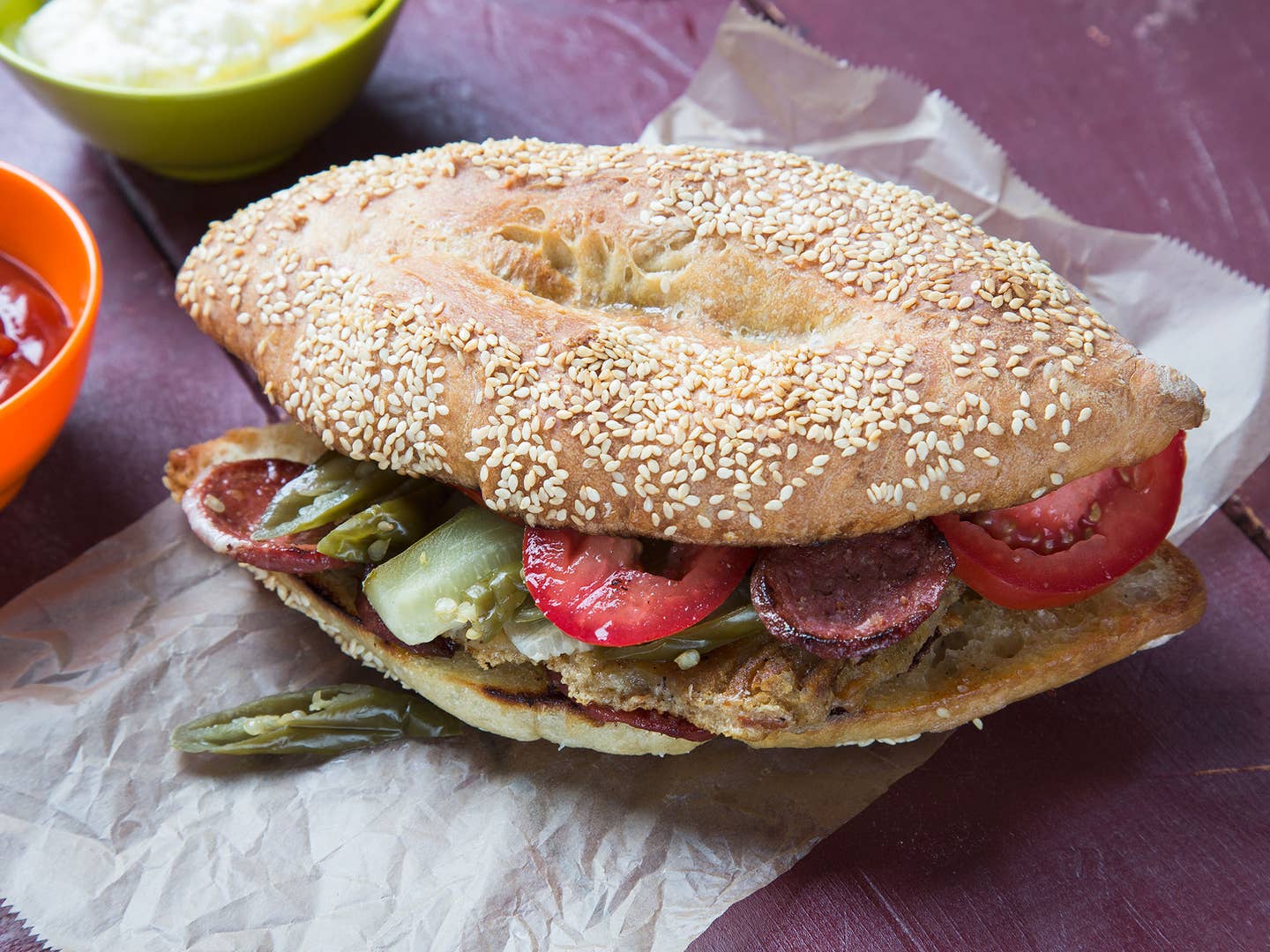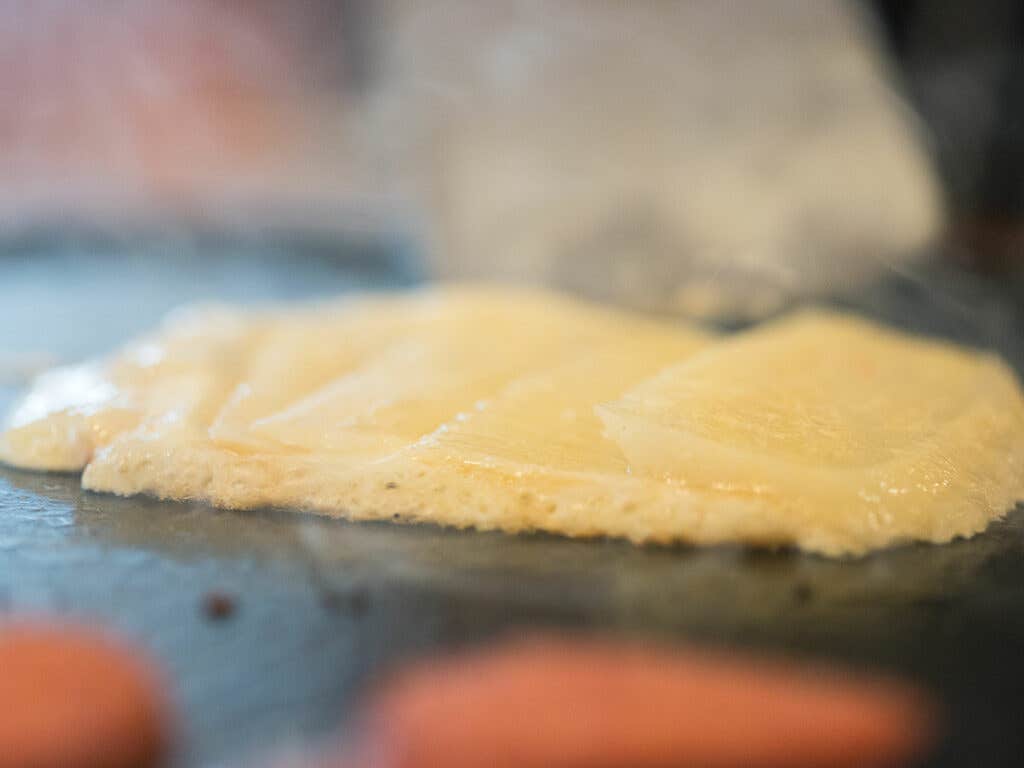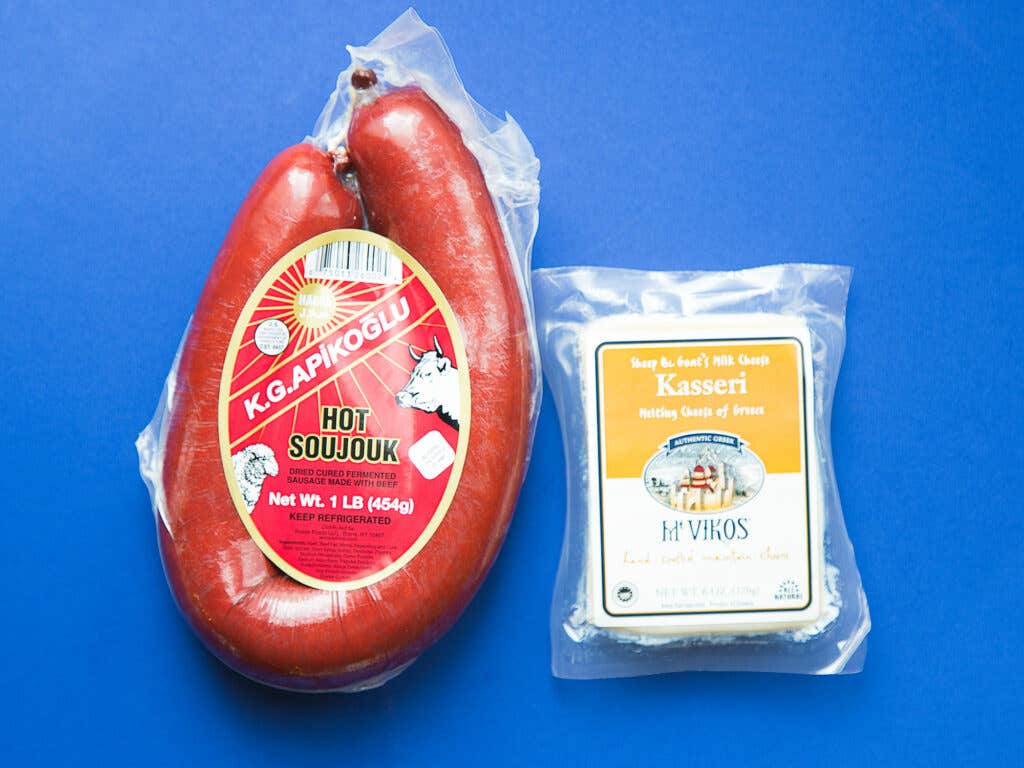
The World’s Best Grilled Cheese Sandwich Comes From Turkey, and We Think You Really Ought to Make One
Kumru is virtually unknown outside Turkey’s borders, and that needs to change
The best grilled cheese on the planet comes from a beach town in western Turkey where the pace is slow, the water is like crystal, and the peaches are so ripe they turn to nectar when you bite into them. It is called kumru, which translates from Turkish as "turtledove," but really means "thank you, town of Çesme, for giving us this perfect thing." Yet the sandwich—simple ingredients that meld into exquisite lazy summer-eating like kasseri cheese, raw tomato, and optional fixings like griddled sausage, pickles, hot peppers, ketchup, and mayo on a bun—is virtually unknown beyond Turkey's borders. Let us do what we can to change that.
Çesme (population: 20,000) is a little vacation town near İzmir, which is Turkey's third largest city behind Istanbul and Ankara. With its resorts and beautiful coastline, life in Çesme has a simple formula. Wake up. Eat a lovely breakfast of tomatoes and yogurt and olives. Maybe go for a swim in the ocean. Then, when the sun's high in the sky and you're hungry again, pop over to the nearby kumrucu ("kumru maker") for a fresh-off-the-grill sandwich and some fantastic local cherry juice. Lay around in the sun. Grab some kebabs or a gorgeous salad for dinner, then go clubbing. And after? Maybe hit up the kumrucu again, because this sandwich is just as good drunk food as it is beach chow.

Kumru is distinct from other grilled cheeses in that the cheese itself is typically grilled (or, technically, griddled on a flat top). The requisite cheese is kasseri, a Greco-Turkish sheeps' milk variety with a texture similar to provolone and a mildly pungent flavor somewhere between butter and lamb. This pre-cooking gives the sandwich an extra bit of crusty, browned bite—like those edges of other grilled cheese sandwiches, where an errant bit of cheese slips out and gets all crispy—but all over. Yet it's only part of why this sandwich works so well. We also have to consider the bread.
The word kumru refers to both the sandwich and the bread used to make it. I've said it before and will say it again: Turkey is home to one of the most sophisticated bread cultures in the world, and kumru is one of the reasons why. Essentially a sesame-seeded, naturally fermented demi-baguette with a fine crumb, enriched by chickpea flour for flavor, heft, and bite, the loaf is ideal sandwich bread. It's lightly crusty but yielding enough to keep your sandwich fillings safely contained. And, it takes brilliantly to toasting, which, if your kumrucu knows their stuff, is done with a lavish amount of butter and a proper live fire grill for a bit of char.

And then comes everything else. My first kumru was a minimalist model: bread, cheese, and a couple thin slices of perfectly ripe tomato (Çesme, if you haven't picked up on it by now, is home to some excellent produce). The tomato adds some necessary sweetness and a taste of something fresh, and no matter how you take your kumru, the tomato's nearly mandatory.
You can, though, pile your kumru to near-Dagwood levels with other ingredients; at Kumrucu Şevki, one of Çesme's most popular kumru spots, the sandwiches come in three levels of intensity: regular, "super," and "sister in law." Perhaps the best addition is sucuk, a heavily spiced beef sausage that the Turks treat like pepperoni (indeed if you slice and cook it, it crisps and curls much like pepperoni does). Pickled cucumbers and chiles add some nice acidity. And some people even go so far as to add ketchup and mayo, but the way I see it, if you've made your kumru right, such condiments are unnecessary.
If you're in Turkey, take note that you can find kumru all over, but the best ones are still in Çesme. That's where the best kumru loaves are baked, and where competition keeps quality high. But this is a sandwich that just begs to be made at home, and we have some tips from our test kitchen for you to try one yourself. If you can't get yourself to Çesme, you can still get a taste of it.
Tips for Homemade Kumru Greatness
Hack your way to the right bread. Kumru loaves are nearly impossible to find outside of Turkey. The closest substitute is a demi baguette topped with sesame seeds, which your local bakery might stock. Or you can do what we did and adapt this four-hour baguette into a proto-kumru loaf by shaping the dough into four loaves with sharp tapered ends, running a long slash down the middle instead of on the diagonal, and blitzing the top with sesame seeds. It doesn't taste exactly the same as kumru but it'll get you most of the way there.
Find the right cheese. Kasseri cheese is traditionally made with sheeps' milk, but domestic American producers prefer cow. Stick to the sheep, which is sharper and more flavorful. Younger varieties are best for this sandwich, as aged ones can get too firm to griddle. Look for a kasseri with the texture of a nice provolone, and if you can't find kasseri, provolone makes a decent substitute, as does Gruyere.
Go minimalist or all-out. Get the most ripe, sweet tomatoes you can find. From there you can call it a day, or you can sliver some pickles into thin spears and slice pickled sport peppers on the bias. Seek out sucuk, which you can get in Middle Eastern groceries or online.
Griddle your cheese hot and fast. To get properly griddled cheese instead of a soupy, melty mess, get a cast iron skillet or grill pan screaming hot, then add enough oil to lubricate the cheese as it cooks. (Here's another reason to consider adding sucuk to your sandwich: The sausage renders lots of fat on the stove, perfect for searing your cheese afterward so it doesn't stick.) Once your cheese is toasted and browned, use the thinnest spatula you have to scrape underneath and flip it in one confident motion.
Get the recipe for Fully Loaded Kumru »
Keep Reading
Continue to Next Story










